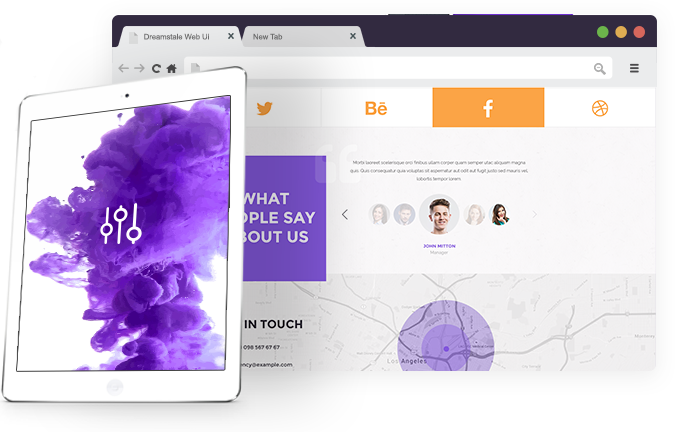Internet / tv / magazines / radio / outdoor advertising
Our Services
Marketing Strategy & Planning
-
Define Objectives: Set clear, measurable goals aligned with business vision.
-
Identify Target Audience: Segment customers by demographics, behavior, and needs.
-
Market Research: Analyze industry trends, competitors, and customer preferences.
-
Unique Value Proposition: Craft a compelling message that differentiates your brand.
-
Brand Positioning: Establish a distinct market position to attract your audience.
-
SWOT Analysis: Assess strengths, weaknesses, opportunities, and threats.
-
Budget Allocation: Plan financial resources for campaigns and tools.
-
Channel Selection: Choose effective platforms (e.g., social media, email, SEO).
-
Content Strategy: Develop engaging content tailored to audience interests.
-
Campaign Planning: Outline timelines, themes, and key performance indicators.
-
Digital Marketing: Leverage SEO, PPC, and social media for online reach.
-
Traditional Marketing: Use print, radio, or events for broader exposure.
-
Customer Journey Mapping: Understand touchpoints to optimize experience.
-
Analytics Setup: Implement tools to track performance (e.g., Google Analytics).
-
KPI Monitoring: Measure success through metrics like ROI, CTR, and conversions.
-
Competitor Benchmarking: Monitor rivals to identify gaps and opportunities.
-
Collaboration: Align marketing with sales and product teams for consistency.
-
Testing & Optimization: Run A/B tests to refine campaigns and messaging.
-
Feedback Loop: Collect customer feedback to improve strategies.
-
Adaptability: Stay flexible to adjust plans based on market changes.
Brand Strategy
- Define Brand Purpose: Articulate the core mission and values driving your brand.
- Identify Target Audience: Pinpoint the ideal customers to tailor your messaging.
- Craft Brand Positioning: Establish a unique market stance to stand out from competitors.
- Develop Brand Voice: Create a consistent tone that reflects your brand’s personality.
- Design Visual Identity: Ensure logos, colors, and typography align with brand essence.
- Ensure Consistency: Maintain uniform messaging across all channels and touchpoints.
- Build Emotional Connection: Foster trust and loyalty through authentic storytelling.
- Monitor Brand Perception: Use feedback and analytics to gauge audience sentiment.
- Align with Business Goals: Ensure brand strategy supports overall company objectives.
- Adapt and Evolve: Regularly refine the strategy to stay relevant in changing markets.
Internet Marketing
Mobile marketing leverages smartphones and tablets to reach consumers with targeted, on-the-go strategies. It includes tactics like SMS campaigns, mobile apps, push notifications, and location-based advertising. Optimizing for mobile ensures websites and ads are responsive and user-friendly on smaller screens. Personalization is key, using data like user behavior and preferences to tailor content. Mobile video ads are highly effective, with short, engaging formats driving higher engagement. In-app advertising taps into users’ time spent on apps, offering immersive ad experiences. Geo-targeting delivers ads based on a user’s real-time location, boosting relevance. Mobile email marketing thrives with concise, visually appealing designs for quick consumption. Social media platforms, like TikTok and Instagram, dominate mobile marketing for younger audiences. Analytics track campaign performance, enabling real-time adjustments for better ROI.
Mobile Marketing
Social media platforms, especially TikTok and Instagram, amplify viral reach through trends and hashtags. Memorable visuals, catchy slogans, or challenges encourage users to participate and share. Influencer partnerships can ignite campaigns by tapping into established, loyal follower bases. User-generated content, like branded challenges, boosts authenticity and organic spread. Timing is critical—aligning with trending topics or cultural moments maximizes impact. Simple, relatable messages resonate more, driving higher virality among diverse audiences. Analytics help track shares, views, and engagement to refine future campaigns. Successful examples, like the Ice Bucket Challenge, show how purpose-driven campaigns go viral.
Viral Marketing Campaigns
Consumer insights uncover the motivations, preferences, and behaviors driving purchasing decisions. They are derived from data like surveys, social media, purchase history, and web analytics. Understanding pain points helps brands address unmet needs with tailored products or services. Segmentation divides consumers into groups based on demographics, interests, or habits. Mobile usage data reveals how consumers interact with brands on smartphones and apps. Social listening on platforms like X tracks real-time sentiments and trending topics. Insights guide personalized marketing, enhancing customer engagement and loyalty. Behavioral trends, like eco-conscious buying, shape product development and messaging. Predictive analytics forecast future consumer preferences, giving brands a competitive edge. Combining qualitative and quantitative data ensures a holistic view of consumer needs.
Consumer insights
Ultimate flexibility in marketing allows brands to adapt swiftly to changing consumer trends. It involves agile strategies that pivot based on real-time data and market shifts. Mobile marketing thrives on flexibility, adjusting campaigns for device types and user habits. Dynamic content, like personalized ads, tailors messages to individual preferences instantly. Cross-platform campaigns ensure seamless engagement across social media, apps, and websites. A/B testing enables rapid experimentation to optimize messaging and visuals. Flexible budgeting allocates resources to high-performing channels for maximum ROI. Real-time analytics, including X platform insights, guide quick strategy adjustments. Scalable tools, like automation platforms, support campaigns of any size or scope. Embracing flexibility ensures brands stay relevant in fast-evolving digital landscapes.
-
Marketing Strategy & Planning
-
Define Objectives: Set clear, measurable goals aligned with business vision.
-
Identify Target Audience: Segment customers by demographics, behavior, and needs.
-
Market Research: Analyze industry trends, competitors, and customer preferences.
-
Unique Value Proposition: Craft a compelling message that differentiates your brand.
-
Brand Positioning: Establish a distinct market position to attract your audience.
-
SWOT Analysis: Assess strengths, weaknesses, opportunities, and threats.
-
Budget Allocation: Plan financial resources for campaigns and tools.
-
Channel Selection: Choose effective platforms (e.g., social media, email, SEO).
-
Content Strategy: Develop engaging content tailored to audience interests.
-
Campaign Planning: Outline timelines, themes, and key performance indicators.
-
Digital Marketing: Leverage SEO, PPC, and social media for online reach.
-
Traditional Marketing: Use print, radio, or events for broader exposure.
-
Customer Journey Mapping: Understand touchpoints to optimize experience.
-
Analytics Setup: Implement tools to track performance (e.g., Google Analytics).
-
KPI Monitoring: Measure success through metrics like ROI, CTR, and conversions.
-
Competitor Benchmarking: Monitor rivals to identify gaps and opportunities.
-
Collaboration: Align marketing with sales and product teams for consistency.
-
Testing & Optimization: Run A/B tests to refine campaigns and messaging.
-
Feedback Loop: Collect customer feedback to improve strategies.
-
Adaptability: Stay flexible to adjust plans based on market changes.
-
-
Brand Strategy
- Define Brand Purpose: Articulate the core mission and values driving your brand.
- Identify Target Audience: Pinpoint the ideal customers to tailor your messaging.
- Craft Brand Positioning: Establish a unique market stance to stand out from competitors.
- Develop Brand Voice: Create a consistent tone that reflects your brand’s personality.
- Design Visual Identity: Ensure logos, colors, and typography align with brand essence.
- Ensure Consistency: Maintain uniform messaging across all channels and touchpoints.
- Build Emotional Connection: Foster trust and loyalty through authentic storytelling.
- Monitor Brand Perception: Use feedback and analytics to gauge audience sentiment.
- Align with Business Goals: Ensure brand strategy supports overall company objectives.
- Adapt and Evolve: Regularly refine the strategy to stay relevant in changing markets.
-
Internet Marketing
Mobile marketing leverages smartphones and tablets to reach consumers with targeted, on-the-go strategies. It includes tactics like SMS campaigns, mobile apps, push notifications, and location-based advertising. Optimizing for mobile ensures websites and ads are responsive and user-friendly on smaller screens. Personalization is key, using data like user behavior and preferences to tailor content. Mobile video ads are highly effective, with short, engaging formats driving higher engagement. In-app advertising taps into users’ time spent on apps, offering immersive ad experiences. Geo-targeting delivers ads based on a user’s real-time location, boosting relevance. Mobile email marketing thrives with concise, visually appealing designs for quick consumption. Social media platforms, like TikTok and Instagram, dominate mobile marketing for younger audiences. Analytics track campaign performance, enabling real-time adjustments for better ROI.
-
Mobile Marketing
Social media platforms, especially TikTok and Instagram, amplify viral reach through trends and hashtags. Memorable visuals, catchy slogans, or challenges encourage users to participate and share. Influencer partnerships can ignite campaigns by tapping into established, loyal follower bases. User-generated content, like branded challenges, boosts authenticity and organic spread. Timing is critical—aligning with trending topics or cultural moments maximizes impact. Simple, relatable messages resonate more, driving higher virality among diverse audiences. Analytics help track shares, views, and engagement to refine future campaigns. Successful examples, like the Ice Bucket Challenge, show how purpose-driven campaigns go viral.
-
Viral Marketing Campaigns
Consumer insights uncover the motivations, preferences, and behaviors driving purchasing decisions. They are derived from data like surveys, social media, purchase history, and web analytics. Understanding pain points helps brands address unmet needs with tailored products or services. Segmentation divides consumers into groups based on demographics, interests, or habits. Mobile usage data reveals how consumers interact with brands on smartphones and apps. Social listening on platforms like X tracks real-time sentiments and trending topics. Insights guide personalized marketing, enhancing customer engagement and loyalty. Behavioral trends, like eco-conscious buying, shape product development and messaging. Predictive analytics forecast future consumer preferences, giving brands a competitive edge. Combining qualitative and quantitative data ensures a holistic view of consumer needs.
-
Consumer insights
Ultimate flexibility in marketing allows brands to adapt swiftly to changing consumer trends. It involves agile strategies that pivot based on real-time data and market shifts. Mobile marketing thrives on flexibility, adjusting campaigns for device types and user habits. Dynamic content, like personalized ads, tailors messages to individual preferences instantly. Cross-platform campaigns ensure seamless engagement across social media, apps, and websites. A/B testing enables rapid experimentation to optimize messaging and visuals. Flexible budgeting allocates resources to high-performing channels for maximum ROI. Real-time analytics, including X platform insights, guide quick strategy adjustments. Scalable tools, like automation platforms, support campaigns of any size or scope. Embracing flexibility ensures brands stay relevant in fast-evolving digital landscapes.
Be responsive
We reccomend to use complex marketing strategy, thah include TV, magazines, online and outdoor advertising. We take into account the specifics of your business and use all the channels you want to work with your prospects and customers.
Our Latest Projects
From Our Blog
Subscribe today for latest offers!
Various versions have evolved over the years, sometimes by accident, sometimes on purpose
Do you want to work with us?
Ultimate flexibility
There are many variations of passages of Lorem Ipsum available, but the majority have suffered alteration in some form, by injected humour, or randomised words which don’t look even slightly believable. If you are going to use a passage of Lorem Ipsum, you need to be sure there isn’t anything embarrassing hidden in the middle of text.

What people say about us
Can say about these guys only good words. It has been a pleasure working with them creating the strategy for my company and even some more things.
It has been a pleasure working with them creating the strategy for my company and even some more things.
It has been a pleasure working with them creating the strategy for my company and even some more things. Can say about these guys only good words.
Can say about these guys only good words. It has been a pleasure working with them creating the strategy for my company and even some more things.






















